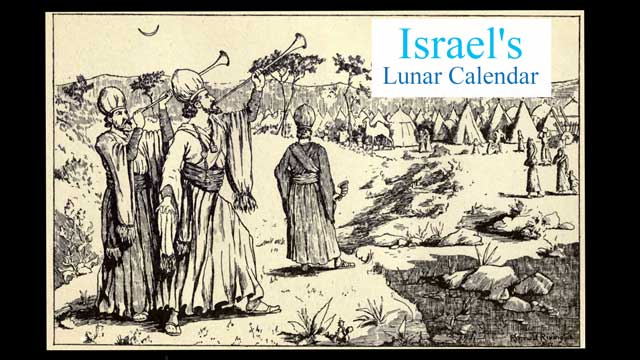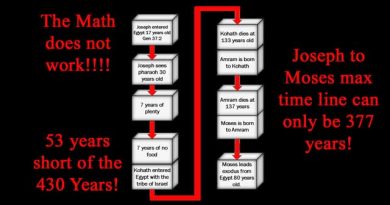Reconstruction of Israel’s Lunar Calendar
There are two significant differences between Israel’s culture and our culture that force us to adjust the calendar to match biblical events. The first is when Israel starts their days, and the second is how Israel calculates their months.
Israel starts their day at twilight, but we start our day at midnight. Moses said the “first day,” as in after the sun goes down, is the start of the first day. This can be confusing because we end our day one second before midnight and start the next day at midnight. This can be seen in “Zulu” military time, which starts at 0000Z and only goes up to 2359Z. We call the end of our day evening, but Israel calls it the beginning of the day.
Israel’s months are based on lunar months, not a set number of days. Thus, Israel’s calendar consists of 12 to 13 months.
Israel’s month begins with the observation of the first crescent moon after the new moon at sunset. The scientific term for the new moon is when the moon is directly in front of the sun and invisible. The Bible and Israel disagree with the scientific definition of the new moon. As stated in the Talmud, “Therefore it is written [Ex. xii. 2]: ‘This month shall be unto you the first of the months’, which means as soon as you see (the new moon).”[1] The Israelites fixed the date upon the testimony of witnesses who would announce when the new moon was sighted. In keeping with Scripture and Israel’s traditions, the sounding of the trumpets occurs at the sighting of a new moon. The new moon is when the first crescent of the moon is observed. From this point forward, this book will consider the new moon the same way the Bible does as the first sighting of the first crescent moon at sunset.
The best Bible example for Israel’s start of the month is found in 1 Samuel 20:5, 24, and 27:
- 1 Samuel 20:5 – “David said unto Jonathan, Behold, tomorrow is the new moon…”
- 1 Samuel 20:24 – “…when the new moon was come…”
- 1 Samuel 20:27 – “…on the morrow after the new moon, which was the second day…”
The month begins with the sighting of the new moon. This is documented within 1 Samuel 20. In verse five, David said “tomorrow is the new moon”. One then can confirm in verse 24 that the new moon had come. Ultimately, in verse 27, the wordage of the “second day of the month” when held in this light is also the second day of the new moon. This Scripture demonstrates that the beginning of the month revolves around the new moon’s sighting.
A lunar month is about 29.5 days long, so Israel chose two 29-day months and one 30-day month. The two half days are combined into one full day and tacked onto a month. Israel’s calendar would then have two 29-day months with one 30-day month and then repeat that sequence throughout the year.
A consequence of starting the month on a new moon versus a set pattern such as a modern-day calendar means that one must be there to visually verify the beginning of the month, making it next to impossible for historians to tell when the months started.
The Old Testament references several sabbaths with specific days tied to two months, making it impossible to discern the year because they did not know when the new moons occurred.
Thankfully, today, the Holy Spirit has blessed us with the ability to calculate the revolutions of years accurately. One can now model the moon’s exact rise, allowing us to find fixed dates that could not have been fixed before. For the first time in history, one can find any day of the Israelite’s calendar.
[1] Translated by Michael L. Rodkinson, New Edition of Babylonian Talmud: “New Year” vol. III (Boston: New Talmud Publishing Society, 1916), p. 36.



